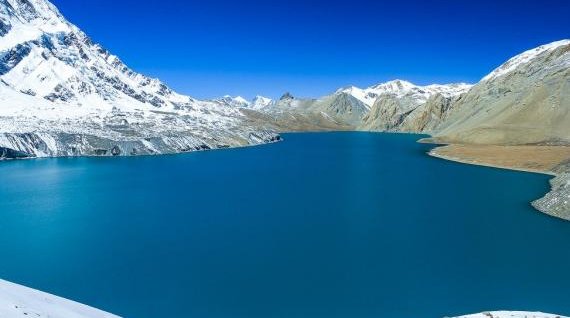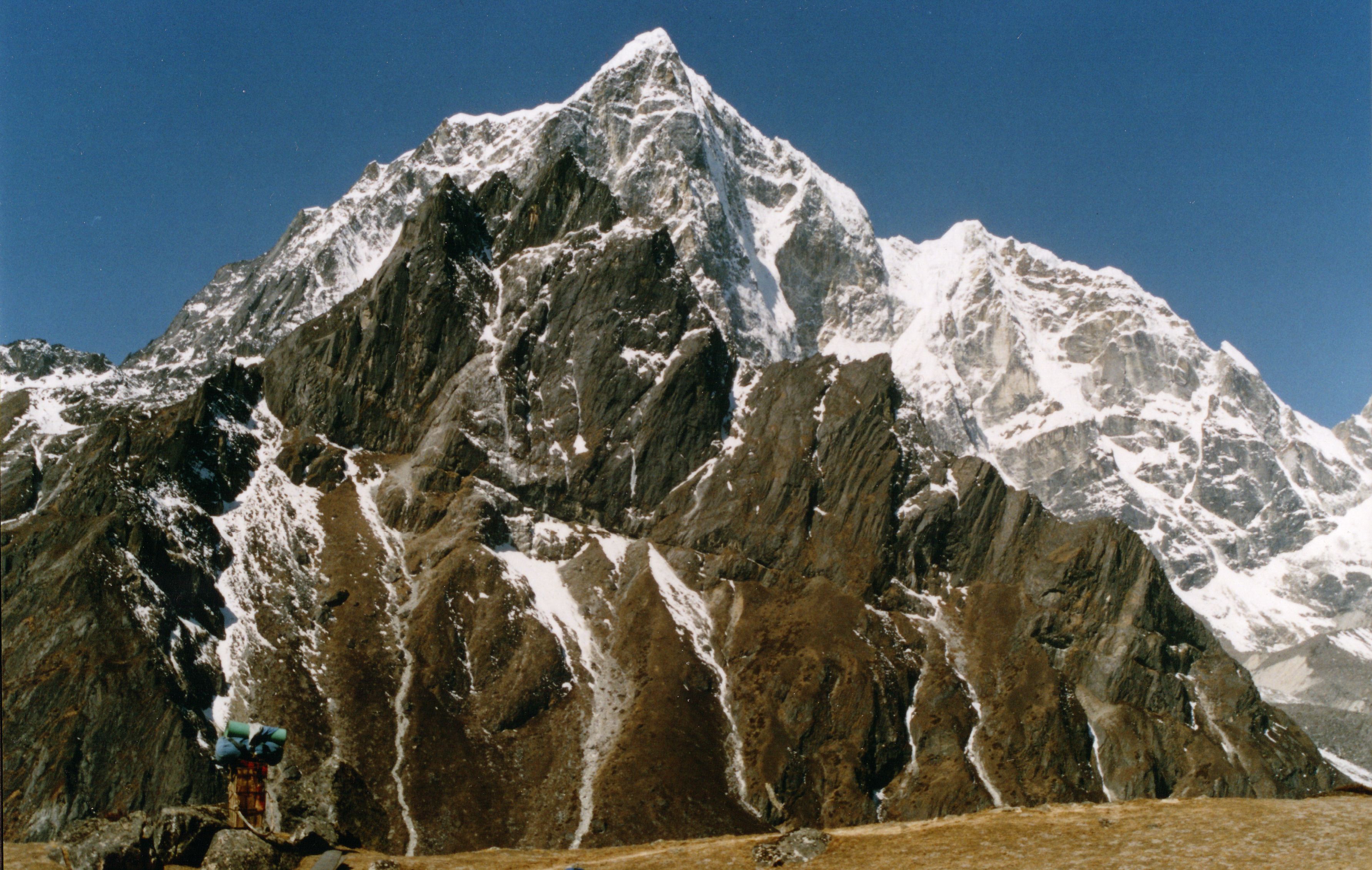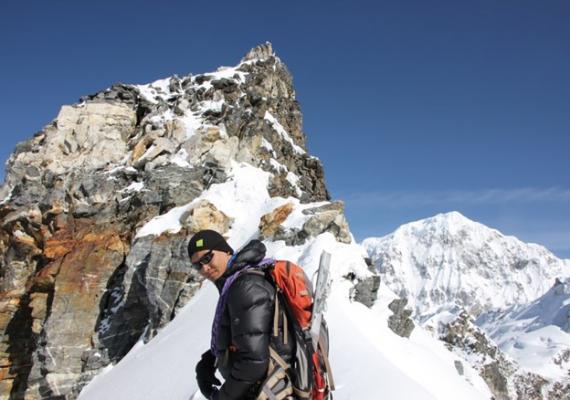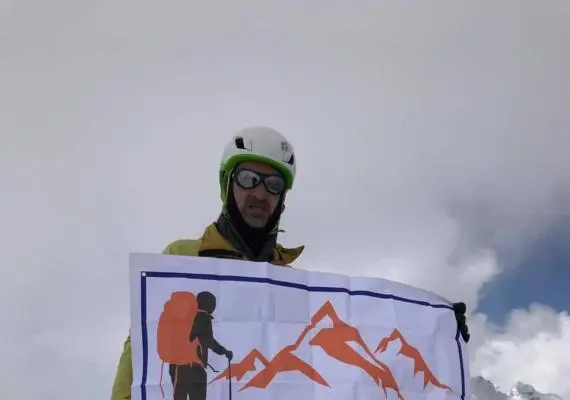Standing at 4,919 meters above sea level, Tilicho Lake isn't just another mountain lake – it's a shimmering turquoise jewel nestled in the raw wilderness of the Annapurna region. This glacial lake, claimed to be one of the highest in the world, draws adventurous trekkers away from the crowded Annapurna Circuit into a landscape of ice-carved valleys, ancient monasteries, and wind-swept passes. The journey to reach this sacred lake tests your determination but rewards you with some of the most dramatic mountain scenery in the Himalayas.
Most trekkers discover Tilicho Lake as a spectacular detour from the classic Annapurna Circuit, but it deserves recognition as a destination in its own right. The trek combines everything Nepal offers – friendly Gurung and Thakali villages, Buddhist prayer flags fluttering against snow peaks, and that heart-stopping moment when you first glimpse the lake's impossible blue waters. Whether you're seeking spiritual significance at this holy Hindu site or simply chasing incredible photography, the Tilicho Lake Trek delivers experiences that stick with you long after returning home.
Trip Highlights
- Tilicho Lake at 4,919m – One of the world's highest glacial lakes with stunning turquoise waters
- Spectacular mountain views – Annapurna range, Dhaulagiri, Nilgiri, and Gangapurna
- Thorong La Pass option – Combine with the famous 5,416m pass crossing
- Traditional villages – Experience Gurung, Thakali, and Manangi culture
- Ancient monasteries – Visit Braga Monastery and other Buddhist sites
- Diverse landscapes – From subtropical forests to high-altitude desert
- Wildlife spotting – Blue sheep, Himalayan tahr, and diverse bird species
- Less crowded trails – Escape the main Annapurna Circuit crowds
- Sacred pilgrimage site – Important Hindu and Buddhist spiritual destination
Tilicho Lake Trek – 17‑Day Itinerary
- Day 1 | Kathmandu → Besisahar
Drive: 6–7 hrs • Altitude: ~760 m
- Day 2 | Besisahar → Bhulbhule
Trek: 5–6 hrs • Altitude: ~840 m
- Day 3 | Bhulbhule → Chamje
Trek: 6–7 hrs • Altitude: ~1,410 m
- Day 4 | Chamje → Dharapani
Trek: 5–6 hrs • Altitude: ~1,960 m
- Day 5 | Dharapani → Chame
Trek: 5–6 hrs • Altitude: ~2,710 m
- Day 6 | Chame → Pisang
Trek: 5–6 hrs • Altitude: ~3,300 m
- Day 7 | Pisang → Manang
Trek: 6–7 hrs • Altitude: ~3,519 m
- Day 8 | Acclimatization in Manang
Rest and optional short hikes • Altitude: ~3,519 m
- Day 9 | Manang → Khangsar
Trek: 3–4 hrs • Altitude: ~3,734 m
- Day 10 | Khangsar → Tilicho Base Camp
Trek: 5–6 hrs • Altitude: ~4,150 m
- Day 11 | Tilicho Base Camp → Tilicho Lake (and back)
Day‑hike: 7–8 hrs • Altitude: ~4,919 m
- Day 12 | Tilicho Base Camp → Yak Kharka
Trek: 6–7 hrs • Altitude: ~4,110 m
- Day 13 | Yak Kharka → Thorong Phedi
Trek: 3–4 hrs • Altitude: ~4,450 m
- Day 14 | Thorong Phedi → Muktinath (via Thorong La Pass)
Trek: 8–10 hrs • Altitudes: ~5,416 m peak / descend to ~3,710 m
- Day 15 | Muktinath → Jomsom
Trek: 5–6 hrs • Altitude: ~2,743 m
- Day 16 | Jomsom → Pokhara
Flight: ~25 min • Altitude: ~820 m
- Day 17 | Pokhara → Kathmandu
Drive or flight • Altitude: ~1,400 m
Understanding the Tilicho Lake Trek
Route Overview and Options
The Tilicho Lake Trek typically branches off from the main Annapurna Circuit at Manang village. You've got three main options for tackling this adventure. First, you can do Tilicho as a side trip from Manang (4-5 days round trip). Second, combine it with crossing Thorong La Pass for the full circuit experience. Third, some adventurous souls cross directly from Tilicho to Thorong La via the challenging Mesokanto Pass (5,121m).
The standard route follows ancient trade paths through the Marsyangdi Valley before climbing into the remote Khangsar Valley. This isn't your typical teahouse trek – once you leave Manang, facilities become basic and the landscape turns wild. The final approach to the lake involves crossing unstable scree slopes that test your balance and determination.
Cultural Immersion Along the Trail
Your trek begins in Hindu lowlands but gradually transitions into Buddhist territory as you climb higher. Villages like Chame and Pisang showcase traditional Tibetan-influenced architecture with flat roofs designed to dry crops. Prayer wheels line the trails, and colorful prayer flags snap in the mountain wind.
The people change too as you ascend. Lower villages are home to Gurung communities, famous for their Gurkha soldiers. Higher up, you'll meet Thakali traders and finally the Manangi people, who've adapted to life at extreme altitude. Each group maintains distinct traditions, from the Gurung's honey hunting to the Manangi's yak herding.
Best Time for Tilicho Lake Trek
Spring Season (March-May)
Spring brings stable weather and clear skies to the Annapurna region. Rhododendrons paint the hillsides red and pink below 3,500m. Days are warm but nights remain cold, especially at higher altitudes. The lake might still be frozen in early March, creating a different but equally stunning scene. This season sees moderate crowds on the main circuit but fewer trekkers venture to Tilicho.
Autumn Season (September-November)
Autumn ranks as peak trekking season for good reason. After monsoon clears, you get crystal-clear mountain views and stable weather patterns. The lake displays its famous turquoise color best during these months. Expect busy trails on the main circuit but Tilicho remains relatively peaceful. Book accommodations in advance for popular stops like Manang.
Monsoon and Winter Considerations
Summer monsoon (June-August) brings rain, leeches, and cloudy skies – not ideal for Tilicho. However, the landscape turns incredibly green and you'll have trails mostly to yourself. Winter (December-February) transforms Tilicho into a frozen wonderland. The lake freezes solid and snow blankets everything above 4,000m. Only experienced winter trekkers should attempt this season.
Tilicho Lake Trek Difficulty and Challenges
Physical Demands
Let's be honest – reaching Tilicho Lake isn't easy. The trek demands good physical fitness and mental determination. You'll walk 5-8 hours daily on varied terrain including steep ascents, river crossings, and exposed scree slopes. The final day to the lake involves navigating loose rocks on steep mountainsides where each step needs careful placement.
Altitude Considerations
The high altitude poses the biggest challenge for most trekkers. Starting from just 760m, you'll climb to nearly 5,000m at Tilicho Lake. Above 3,000m, altitude sickness (AMS) becomes a real concern. Common symptoms include headaches, nausea, and difficulty sleeping. The key is ascending slowly and taking rest days for acclimatization.
Your body needs time to produce more red blood cells to carry oxygen efficiently. That's why the itinerary includes an acclimatization day in Manang. Some trekkers also do day hikes to higher elevations, returning to sleep lower – the "climb high, sleep low" principle that aids acclimatization.
Packing List for Tilicho Lake Trek
Essential Clothing for High Altitude
The Himalayas demand serious layering systems. Start with moisture-wicking base layers that keep sweat away from your skin. Merino wool or synthetic materials work best – avoid cotton which loses insulation when wet. For your insulation layer, pack a good fleece jacket and a down jacket rated for extreme cold. The temperature drops below -15°C at Tilicho Base Camp.
Your outer shell needs to handle wind, rain, and snow. Invest in quality waterproof jacket and pants with sealed seams. Don't forget extremities – pack warm gloves (liner + insulated), a fleece-lined hat covering ears, and a sun hat for lower elevations. A buff or neck gaiter proves invaluable against cold winds on exposed ridges.
Footwear and Walking Equipment
Your trekking boots make or break the experience. Choose sturdy, waterproof boots with ankle support, broken in well before departure. The rocky terrain and stream crossings demand quality footwear. Pack 4-5 pairs of trekking socks – wool or synthetic blends prevent blisters. Gaiters help keep snow and debris out during the final lake approach.
Trekking poles aren't optional for Tilicho – they're essential. The unstable scree slopes and steep descents put tremendous strain on knees. Quality poles with adjustable length and comfortable grips reduce fatigue and improve safety. Many lodges sell basic poles in Manang if you forget them.
Technical Gear for Safety
Navigation becomes crucial in poor weather. Pack a detailed map, compass, and GPS device or smartphone with offline maps downloaded. A powerful headlamp with extra batteries is mandatory for early morning starts to the lake. The pre-dawn departure means walking in complete darkness.
Safety equipment includes:
- First aid kit with blister treatment
- Water purification tablets or UV sterilizer
- Sunglasses with UV protection (glacier glasses ideal)
- Sunscreen SPF 50+ and lip balm
- Whistle for emergencies
- Duct tape for gear repairs
Sleeping and Comfort Items
While teahouses provide blankets, you'll need a quality sleeping bag rated to -15°C minimum. A silk liner adds warmth and hygiene. Pack a small pillow or inflatable pillow for comfort – lodge pillows are often questionable. Quick-dry towels and biodegradable soap handle basic hygiene needs.
Personal comfort items make harsh conditions bearable:
- Wet wipes for days without showers
- Hand warmers for cold mornings
- Kindle or book for rest days
- Playing cards for social evenings
- Journal to record experiences
- Camera with extra batteries
Acclimatization Tips for High Altitude Success
Understanding Altitude Physiology
Your body undergoes remarkable changes adapting to thin air in the Himalayas. At sea level, oxygen saturation in blood stays around 98%. At Tilicho Lake's altitude, it drops to 50-60%. This triggers production of erythropoietin (EPO), stimulating red blood cell creation. The process takes time – rushing invites acute mountain sickness (AMS).
The golden rule remains simple: ascend slowly. Above 3,000m, limit daily altitude gains to 300-500m. The trek itinerary builds in natural acclimatization, but listen to your body. Mild headaches and poor sleep are normal. Severe symptoms demand immediate descent.
Practical Acclimatization Strategies
The "climb high, sleep low" principle works wonders. During your Manang rest day, hike to viewpoints above 4,000m before returning to sleep at 3,519m. This stimulates adaptation without overextending. Many trekkers visit Ice Lake (4,600m) as a day trip from Manang.
Hydration plays a crucial role in altitude adaptation. Drink 3-4 liters of water daily, even if you don't feel thirsty. The dry mountain air and increased breathing rate cause dehydration. Your urine should stay pale yellow – dark color indicates insufficient hydration. Avoid alcohol which worsens dehydration and interferes with acclimatization.
Natural Remedies and Medication
Garlic soup appears on every menu for good reason – locals swear by its acclimatization properties. Whether placebo or real effect, the hot liquid provides hydration and warmth. Ginger tea settles altitude-related nausea. Coca tea, while unavailable in Nepal, would help if it were legal.
Many trekkers use Diamox (Acetazolamide) preventively. This medication acidifies blood, stimulating breathing and improving oxygen uptake. Start taking 125-250mg twice daily one day before reaching 3,000m. Side effects include tingling fingers and frequent urination. Consult your doctor before use.
Warning Signs and Response
Learn to distinguish normal discomfort from dangerous AMS symptoms. Mild headaches responding to rest and hydration are common. Severe headaches persisting despite medication require attention. Loss of appetite affects many trekkers but complete food aversion signals problems.
High Altitude Cerebral Edema (HACE) and High Altitude Pulmonary Edema (HAPE) are life-threatening conditions. HACE symptoms include confusion, loss of coordination, and irrational behavior. HAPE presents as extreme breathlessness, frothy cough, and gurgling breath sounds. Both require immediate descent and evacuation.
Accommodation Along the Tilicho Lake Trail
Teahouse Standards by Altitude
The Nepal trekking experience revolves around its famous teahouse system. Lower elevations offer surprising comfort – private rooms with attached bathrooms, hot showers, and even WiFi. Guesthouses in Chame and Pisang feature traditional architecture with modern amenities. Expect clean beds, thick blankets, and varied menus.
As you climb toward Manang, standards remain good but prices increase. The tourism hub of Manang offers everything from German bakeries to gear shops. Hotels here understand trekker needs – early breakfast service, packed lunches, and hot water bottles for cold nights. Some lodges even screen movies in communal areas.
Remote Mountain Lodges
Beyond Manang, accommodation becomes basic but authentic. Khangsar village has limited options with shared facilities. The community manages lodges collectively, ensuring tourism benefits local families. Rooms are simple – twin beds with foam mattresses and heavy blankets. Bring your sleeping bag for extra warmth.
Tilicho Base Camp tests your comfort threshold. The single lodge here is essentially a stone shelter at 4,150m. Expect dormitory-style rooms with basic beds. No showers exist – most trekkers skip washing for one night. The dining room crowds around a single stove where everyone shares stories and warmth. Despite basic conditions, the camaraderie creates lasting memories.
Food and Dining Experiences
Dal bhat powers Nepal's trekkers for good reason. This traditional meal of rice, lentil soup, vegetables, and pickles offers unlimited refills. Lodges take pride in their dal bhat – each kitchen adds unique touches. The meal provides balanced nutrition and sustained energy for long trekking days.
Menu variety decreases with altitude but creativity remains. Tibetan bread with local honey makes perfect breakfast. Garlic soup aids acclimatization while warming cold bodies. Momos (dumplings) stuffed with vegetables or yak cheese offer comfort food at altitude. Even at remote Tilicho Base Camp, you'll find hot meals and endless tea.
Booking and Availability
The Annapurna region operates on first-come, first-served basis for independent trekkers. During peak season (October-November), popular stops like Manang fill quickly. Arrive early afternoon to secure better rooms. Guides typically phone ahead to reserve spaces for their groups.
Pricing increases with altitude – a room costing $3 in Besisahar might cost $8 at Base Camp. Food prices similarly escalate. Budget NPR 2,500-3,500 daily for accommodation and meals above Manang. Hot showers, charging, and WiFi incur additional fees. Carry sufficient cash as no ATMs exist beyond Manang.
Final Preparations and Tips
Training Recommendations
Start physical preparation 8-12 weeks before departure. Focus on:
- Cardiovascular endurance through hiking, running, or cycling
- Leg strength with squats, lunges, and step-ups
- Core stability for balance on rough terrain
- Practice hikes with weighted backpack
Insurance Requirements
Standard travel insurance rarely covers high-altitude trekking. Ensure your policy includes:
- Coverage up to 5,000m altitude
- Helicopter evacuation coverage
- Medical treatment in Nepal
- Trip cancellation protection
Money Matters
- Bring cash - ATMs only in Kathmandu/Pokhara
- Budget NPR 2,500-3,500 daily on trail
- Small bills helpful for tips and small purchases
- Emergency cash for potential evacuation
Book Your Tilicho Lake Adventure
The journey to Tilicho Lake challenges your body and rewards your spirit in equal measure. From the moment you glimpse its impossible blue waters to the satisfied exhaustion of completing the trek, this adventure creates stories you'll tell for years.
Ready to stand at the shores of one of the world's highest lakes? Himalayan Hero Adventure (himalayanhero.com) specializes in responsible trekking experiences that support local communities while ensuring your safety and comfort. Our experienced guides know every turn of the trail and our commitment to sustainable tourism means your adventure helps preserve these mountains for future generations. Contact us today to start planning your Tilicho Lake Trek – the Himalayas are calling, and this time, you should answer.





